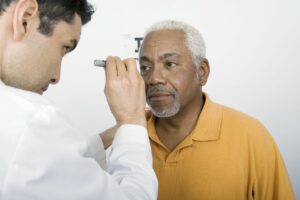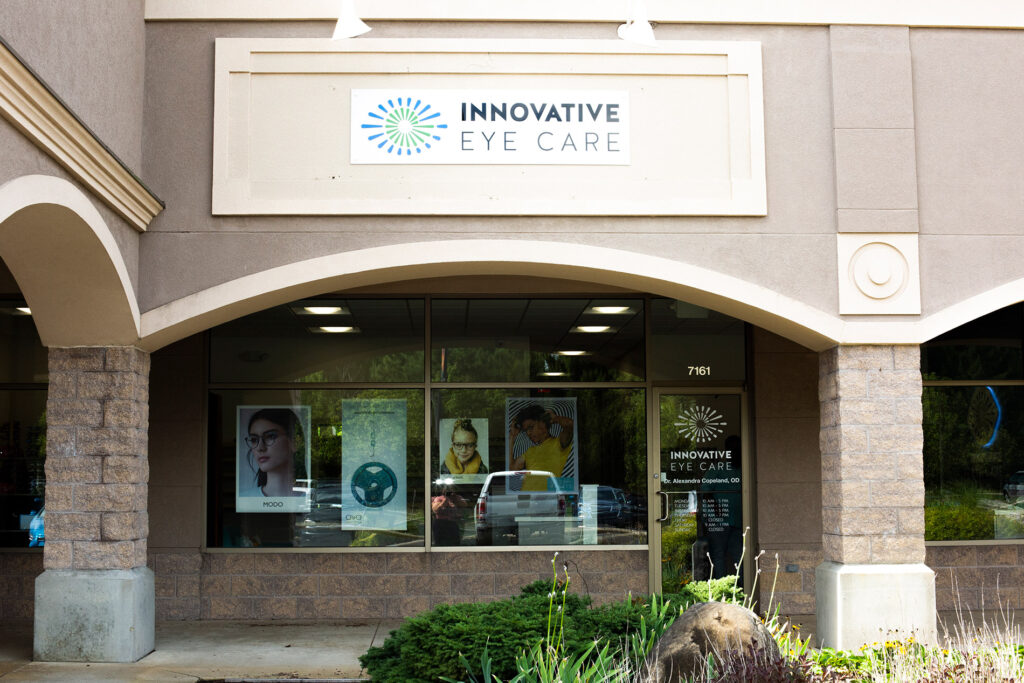 “Lazy Eye” can mean many things to many different people. In eye care we use the term amblyopia to describe an eye(s) with poor vision (worse than 20/20) even when wearing best correction (glasses or contact lenses). Generally, amblyopia will only develop in children if the problem starts before the age of 6. Luckily, amblyopia can be treated at almost any age!
“Lazy Eye” can mean many things to many different people. In eye care we use the term amblyopia to describe an eye(s) with poor vision (worse than 20/20) even when wearing best correction (glasses or contact lenses). Generally, amblyopia will only develop in children if the problem starts before the age of 6. Luckily, amblyopia can be treated at almost any age!
Normal development of the visual system occurs once a baby is born until ages 6-8. During this time, there are many changes and connections being made between the eye and brain that allow vision to improve. Problems can cause the visual system to not develop correctly and result in amblyopia. Below are the three most common causes of amblyopia. One or more can happen at the same time.
This occurs when one of the eyes is not pointing straight ahead; the eye is always turned out, in, up, or down. Since the eyes are pointing in different directions each eye sends different information to the brain. The brain then sees two pictures (double vision) of the same object. The brain does not like to see double. It starts to “ignore” information from the eye that is turned and only uses information from the eye pointing straight ahead. When the turned eye is ignored, good vision does not develop in that eye.
Example: Left eye always points out → amblyopic left eye
This occurs when one eye has a small amount of prescription and the other eye has a large amount of prescription. The eye with little or no prescription can see well without any glasses. It sends strong information to the brain and develops good vision. The eye with a lot of prescription cannot see well without glasses. It sends weak information to the brain and good vision does not develop. The brain may also start to “ignore” information from the “weaker” eye and good vision does not develop in that eye.
Example: Right eye has no prescription, Left eye has a lot of prescription → amblyopic left eye
This occurs when both eyes have a large amount of prescription and cannot see well without glasses. Without glasses, the eyes send blurry information to the brain and good vision does not develop in either eye.
Example: Right and Left Eye have very high prescription → both eyes amblyopic
A lot of times, there are no signs or symptoms of amblyopia. This is because the person has good vision out of one eye and does not know that the other eye has poor vision. It is important to have a comprehensive eye exam to find out if amblyopia exists.
The eyes work best together when they have the same vision. When vision is different, judging depth is hard. Many jobs require good vision and depth perception. It is also important to improve vision in the amblyopic eye in case an accident causes damage to non-amblyopic eye. People with amblyopia are more likely to have an eye injury.
The goal of this treatment is to teach the turned eye to point straight ahead. Glasses (or contact lenses) are prescribed by the eye doctor. When wearing correction, the patient also patches the eye that looks straight ahead, the non-amblyopic eye. When the non-amblyopic eye is patched, the patient has to use his amblyopic eye to see. Patching should be done for 2 or more hours every day. When the non-amblyopic eye is patched, it is important to do detailed activities that make the amblyopic eye work hard; activities include reading, playing games on phone, word searches, etc. After 4-6 weeks of wearing glasses and patching, the eye doctor re-checks vision and the eye turn. The patient may need to increase the amount of time the non-amblyopic eye is patched or perform vision therapy exercises to help vision develop correctly.
The goal of this treatment is to create a clear image on the back of the eye. Glasses (or contact lenses) are prescribed by the eye doctor. After 4-6 weeks of wearing correction, the eye doctor re-checks the vision and prescription to make sure that the glasses are correct. Changes may need to be made. The patient may need to patch an eye or perform vision therapy exercises while wearing correction to help the vision develop correctly.
Yes, in some cases. The best improvements in vision are made when amblyopia is found and treated early in life. The earlier amblyopia is treated, the more time the visual system has to develop normally. Vision has the best chance of getting better when the patient follows the treatment plan. The above treatments will not hurt the non-amblyopic eye. Sometimes, even though the patient follows the plan, vision improves a little or not at all. This is because some amblyopia is harder to treat then others. It is hard for the doctor to tell exactly how much better the vision will get before treatment. However, it is better to follow through with the doctor’s plan and try to improve vision than to not try at all.
